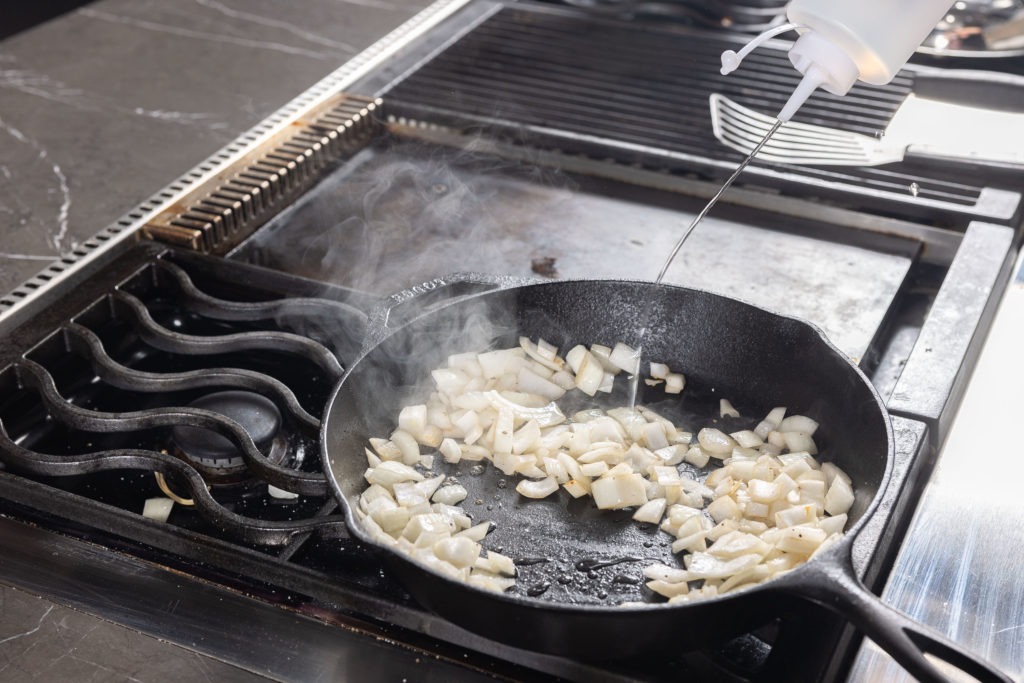The Philly cheesesteak is an iconic American sandwich, beloved for its simple combination of thinly sliced beef, melted cheese, and onions piled high on a soft hoagie roll But where does the magic begin? With the beef! Choosing the right cut of meat is essential for capturing that authentic cheesesteak flavor
In this comprehensive guide, we’ll explore everything you need to know about selecting beef for a genuine Philly cheesesteak.
A Brief History of the Philly Cheesesteak
Let’s start with a quick history lesson. The Philly cheesesteak originated in Philadelphia, Pennsylvania in the early 1930s. It was created by Pat and Harry Olivieri, owners of a hot dog stand who decided to experiment with a new sandwich.
As the story goes, Pat threw sliced ribeye steak on the grill along with some onions. He then had the ingenious idea to put this meat and onions mixture on an Italian roll. When a cab driver smelled the sizzling steak and onions, he convinced Pat to put cheese on top. And just like that, the Philly cheesesteak was born!
Over the years, the sandwich grew in popularity throughout Philadelphia and ultimately became recognized around the world as an iconic regional specialty.
Traditional Ingredients for an Authentic Cheesesteak
An authentic Philly cheesesteak recipe calls for just a few simple ingredients:
-
Thinly sliced beef steak – The star of the sandwich! Traditionally ribeye.
-
Sliced onions – Typically cooked into the meat. White or yellow onions work well.
-
Cheese – Cheez Whiz, provolone, and American cheese are popular choices. Melted on top of the steak.
-
Hoagie roll – A long, soft Italian-style roll is ideal for holding the fillings.
-
Optional extras – These may include mushrooms, peppers, ketchup, or mayo.
When it comes to nailing an authentic cheesesteak, it’s all about the quality of the core ingredients. But first, let’s dive into the beef question.
The Best Beef Cuts for a Genuine Philly Cheesesteak
Choosing the right cut of beef is crucial for Philly cheesesteak perfection. Here are the top contenders:
Ribeye Steak
-
The classic choice – This tender, well-marbled cut has long been the traditional steak for cheesesteaks.
-
Delivers rich, beefy flavor – The high fat content gives ribeye an unbeatable flavor.
-
Stays tender when sliced thinly – Essential for even cooking and an authentic texture.
-
The authentic option – Ribeye is your best bet for a traditional cheesesteak.
Top Round
-
A budget-friendly alternative – Far cheaper than ribeye at around $6 per pound.
-
Leaner with milder flavor – Can lack the richness of ribeye, but still tasty.
-
Cook quickly when thinly sliced – Avoid overcooking to keep top round tender.
-
A common Philly cheesesteak choice – Top round is a frequent ribeye substitute.
Sirloin Steak
-
Leaner than ribeye – Less fat means fewer calories but less richness.
-
Big on beefy flavor – What sirloin lacks in fat it makes up for in taste.
-
Benefits from marinade – Tenderize and add moisture with an acidic marinade.
-
A tasty, affordable option – Sirloin offers an accessible, flavorful alternative.
Flank Steak
-
Naturally lean cut – Flank steak has little marbling but tons of flavor.
-
Needs fast cooking – Slice thinly against the grain and cook quickly.
-
Great budget choice – Far cheaper than ribeye, often under $9 per pound.
-
Unexpected alternative – For a leaner cheesesteak with big steak flavor.
Tips for Prepping and Cooking the Steak
Once you’ve chosen your beef cut, proper prep and cooking are key to cheesesteak success. Follow these pointers:
-
Partially freeze the steak – Makes it easier to slice super thin, around 1/8 inch thick.
-
Slice against the grain – This produces the most tender, easy-to-eat bites.
-
Use a sharp knife – A quality, sharp knife ensures clean, thin slices.
-
Cook quickly over high heat – Sear the slices rapidly to cook through without toughening.
-
Chop during cooking – Break up the meat so it cooks evenly.
-
Limit additions – Stick to just onions, then cheese, to spotlight the beef.
Philly Cheesesteak Cooking Methods
You can cook your sliced steak for cheesesteaks in two classic ways:
On a flat griddle – This allows you to chop and flatten the meat, shaping it into a patty. Griddles get evenly hot.
In a cast iron skillet – Great for containing juices and chopping and flipping the steak. Retains heat well.
Either way, use plenty of oil and keep the pan piping hot to quickly brown the exterior while leaving the inside rare. Melt cheese over top just until ooey-gooey.
Toasting the Hoagie Roll
An excellent hoagie roll is the perfect partner to a fantastic Philly cheesesteak. Seek out a soft, fresh Italian-style roll with a crispy exterior and tender inside.
Quickly toasting the roll before assembly adds delicious flavor. You can:
-
Broil – Split roll and toast open-faced under the broiler for 1-2 minutes.
-
Pan fry – Melt a bit of butter in a skillet and fry rolls cut-side down until golden.
-
Oven bake – For big batches, spread rolls on a baking sheet and bake at 400°F until crisped.
Constructing the Ideal Cheesesteak
Once your hoagie roll is toasty and your steak is cooked, it’s go time! Follow these steps:
- Spread mayo or ketchup on roll bottom (optional).
- Top with steak and onions.
- Spoon over melted cheese sauce or slices.
- Add any other desired toppings.
- Cap it with the roll top.
- Eat immediately while hot and melty!
Now you’re ready to bite into the ultimate authentic Philly cheesesteak.
Key Takeaways for the Best Philly Cheesesteak
- Stick with traditional ribeye or top round for authentic flavor.
- Slice steak paper-thin and chop while cooking over high heat.
- Melt Cheez Whiz, provolone, or American cheese over the hot steak.
- Toast a soft, fresh hoagie roll for ideal cheesesteak texture.
- Keep it simple – the cheese and beef should shine.
With high-quality ingredients and proper cooking techniques, you can make restaurant-worthy Philly cheesesteaks at home. Just focus on that thin sliced steak, melted cheese, and perfect hoagie roll for cheesesteak perfection.
Frequently Asked Questions
What’s the most authentic cheese for a Philly cheesesteak?
Traditionally, the cheeses used are Cheez Whiz, provolone, or white American cheese. The key is gooey meltability!
What’s the best way to slice the steak thinly?
Partially freeze the steak for 30-60 minutes, then use a very sharp knife to slice against the grain into 1/8 inch thick slices.
Is ribeye too expensive for cheesesteaks?
Lower quality ribeye can still work great. Focus on thin slicing rather than high meat quality.
What’s the ideal thickness for a hoagie roll?
Look for a roll around 3-4 inches wide to contain the fillings. Soft, not dense.
Can I use pre-sliced roast beef?
It’s less traditional but convenient. Heat it up in broth or au jus before assembling.
With the knowledge from this guide, you have all the tools to make your best Philly cheesesteak yet. Grab some ribeye or top round, sliced onions, melted cheese, and a perfect hoagie roll to enjoy this American classic. The beauty of a cheesesteak lies in its simplicity – when done right, nothing beats this hot, meaty, cheesy sandwich.
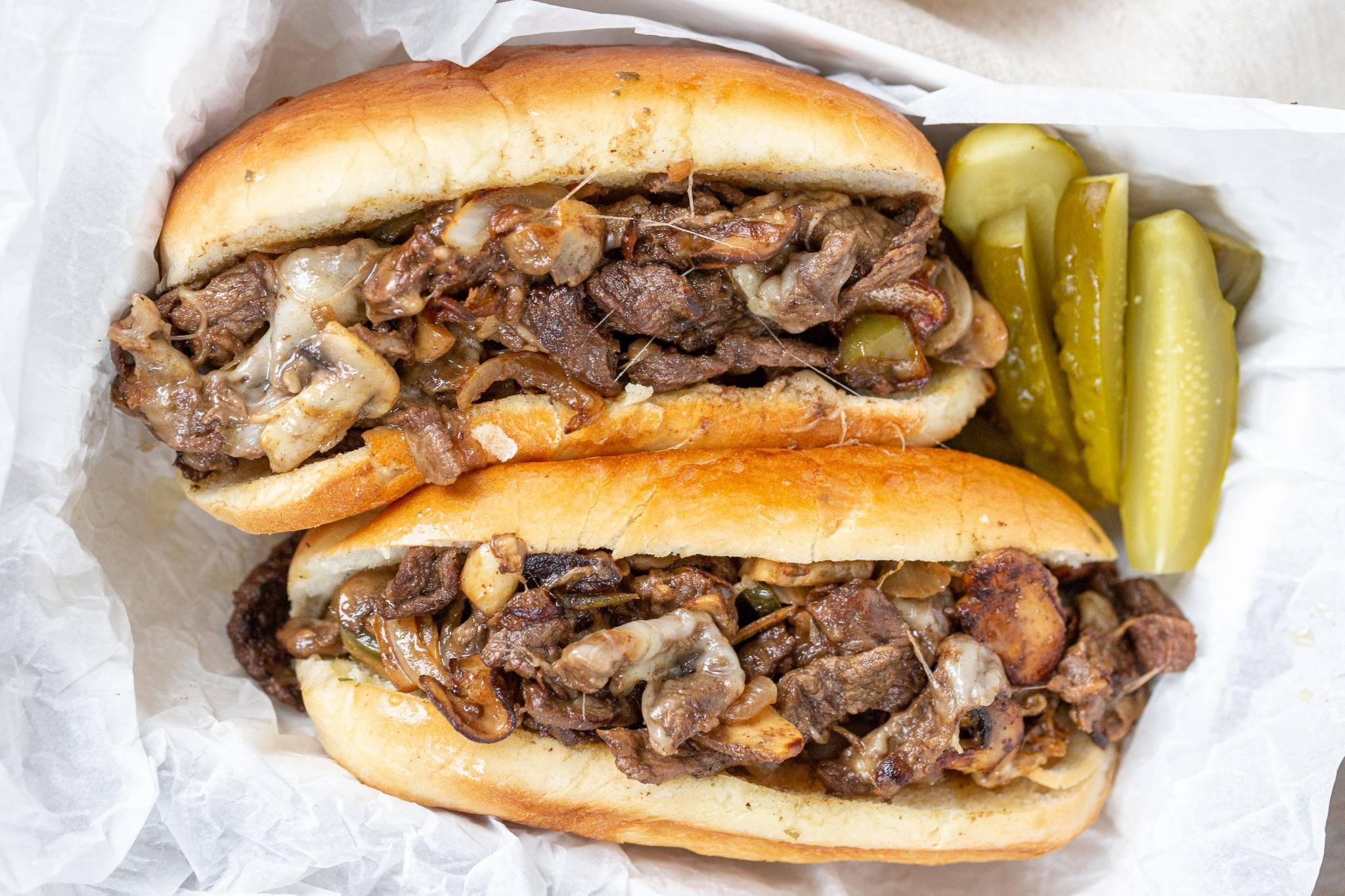
What makes a good Philly cheesesteak?
A good cheesesteak should be served on good bread, have good, properly cooked meat, and enough gooey, melty cheese. Whether a steak should be served “wit” onions is a matter of taste … but we find them indispensable.
For bread, locally baked Italian hoagie rolls in Philly are best, but you can use any good sandwich roll you like. The bread should ideally be crusty on the outside, somewhat chewy inside, and substantial enough to stand up to the juices that will be thrown at it. If you can’t find a good bun, consider making your own! (This recipe for Cuban bread would not be a bad jumping-off point. Change the shape, obviously.)
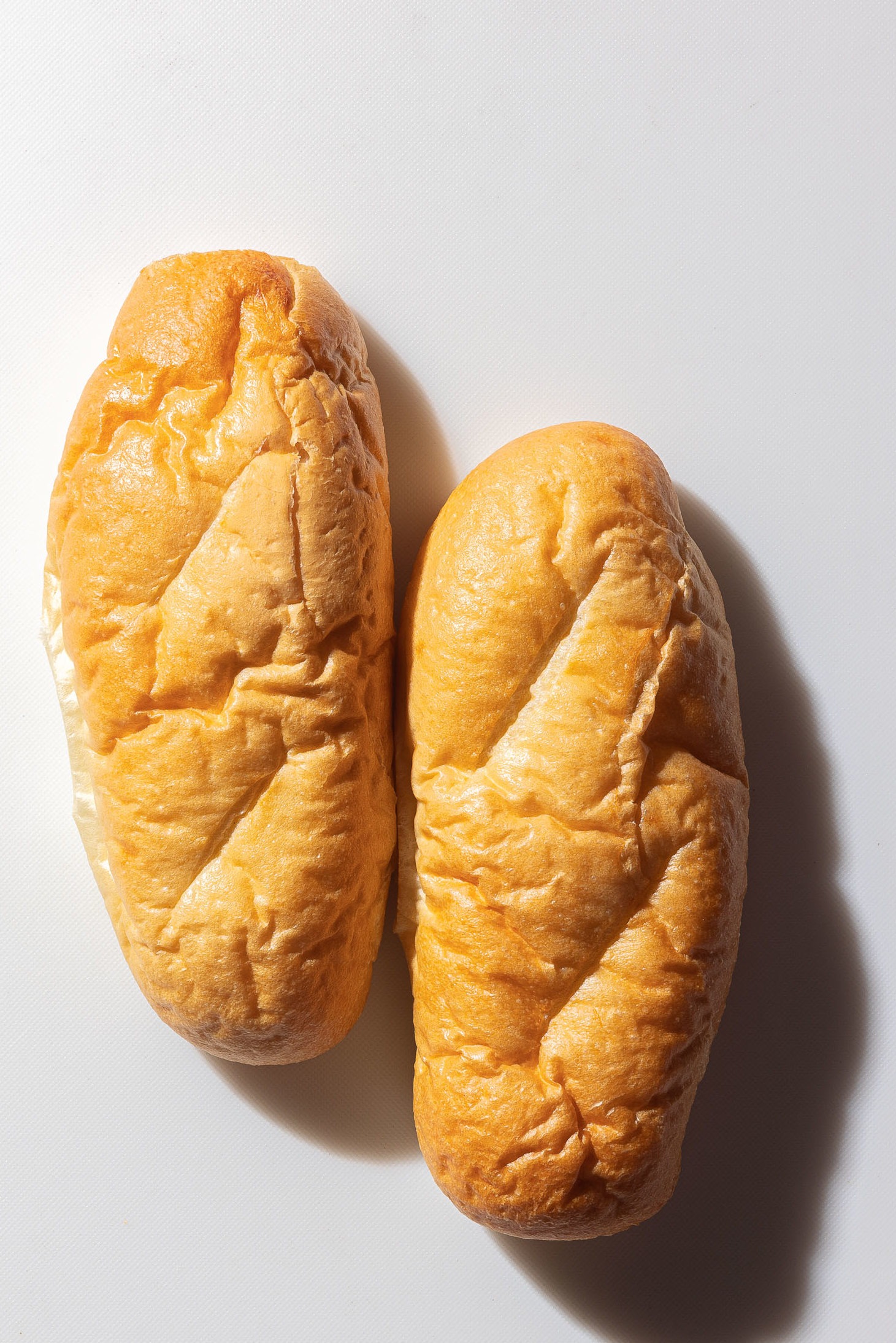
For the meat, you have some choices to make. You want a cut that isn’t too lean—the fat is necessary for juiciness and flavor carry-through. Obviously, ribeye steak is the best, but it can be a little pricey for a few sandwiches. Chuck could work for a budget approach, but you might get it cut just a little thinner than the ribeye. (Ribeye should be cut about 1/8″ thick, chuck almost shaved.)
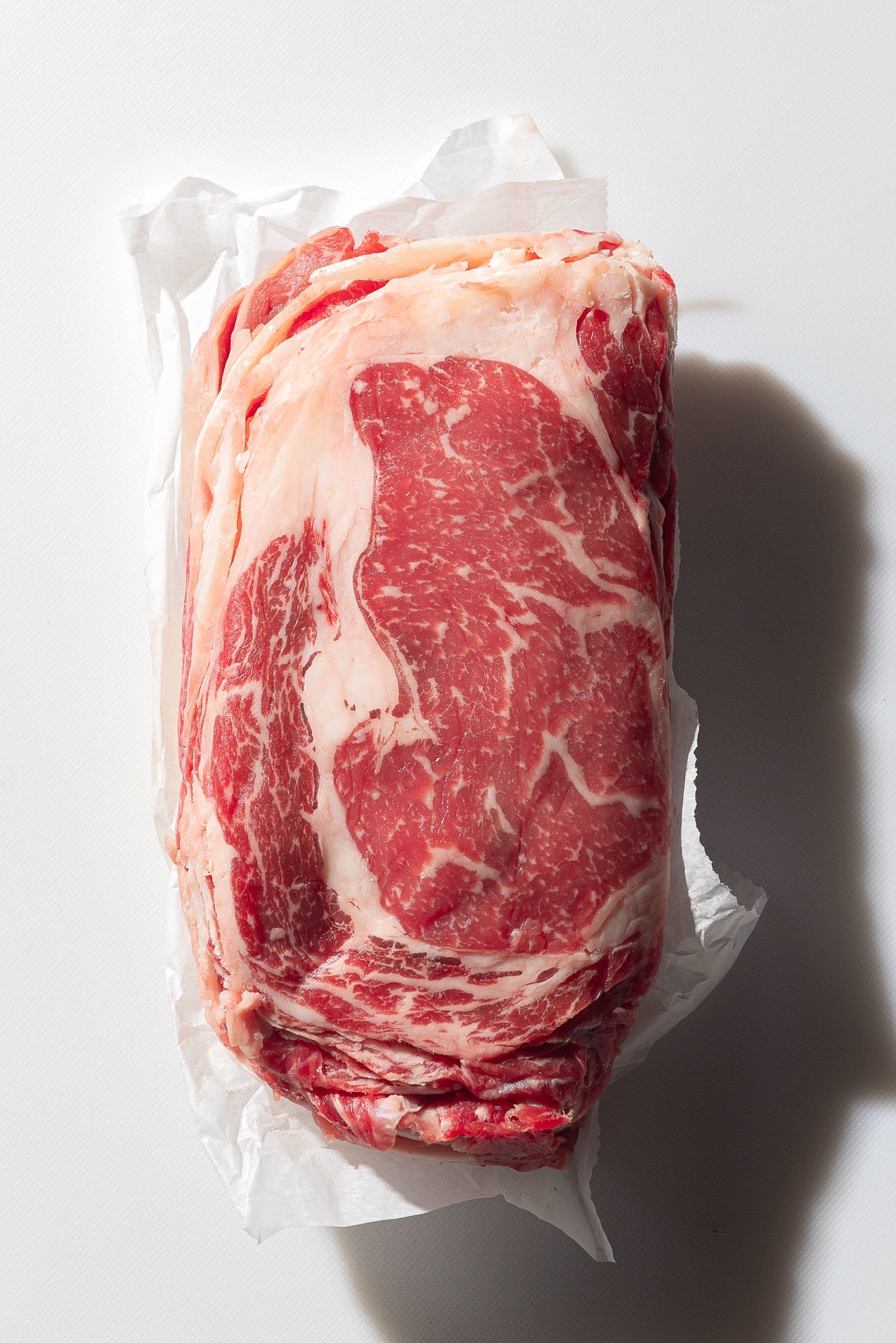
Season your meat. Yes, the cheese is salty/tangy, but the meat needs its own salt to shine. Hit it with a little salt and pepper before you start cooking and the flavor will permeate better.
Cheese. Well, now, that’s a whole dog fight, into which we dare not set our non-native feet. Sharp provolone is classic. But so is American cheese. And, for that matter, so is Whiz. The cheesesteak predates the invention of Whiz, so if we’re looking for the most “traditional,” and we mean by that “the version closest to the very first version ever made,” then provolone is the way to go. But if by “traditional” we mean “true to the character of the dish and the culture surrounding it, in combination with the forces that have acted on that food and culture since its inception,” then American cheese and Whiz are both fine. We’re not going to tell you how to cheese your steak, but we like the sharp provolone with a bit of Whiz. We know. Heresy. Using them both.
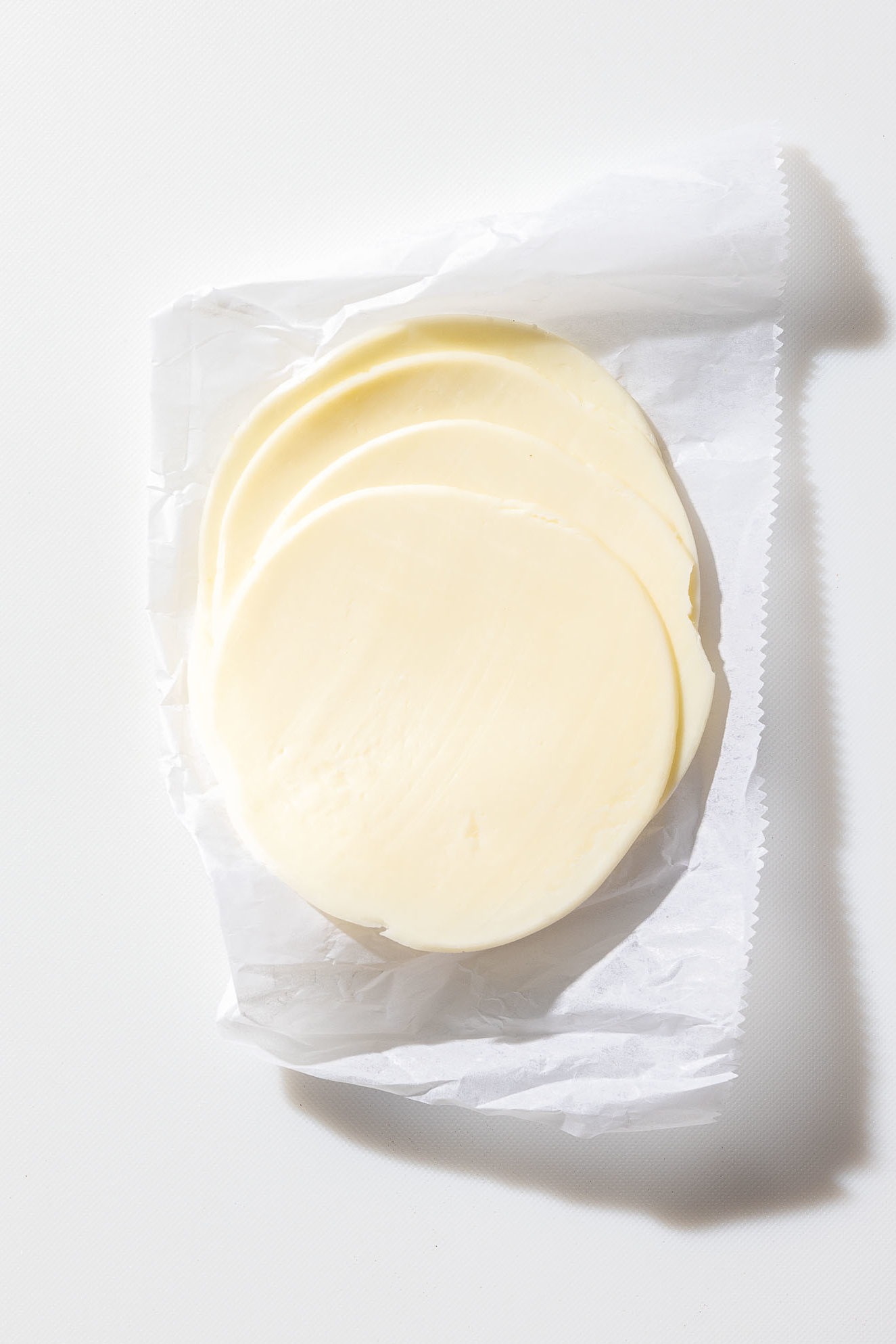
If you use sliced cheese, place the slices on top of your pile of meat and cover the whole thing with a lid of some kind—pot lid, bowl, sheet tray—so catch the heat and make the cheese melt down into the meat, even toasting a little bit on the cooking surface.
If you’re using Whiz, you should heat it until it is pourable. Then, slather some in the bun before adding the meat, and drizzle more on top.
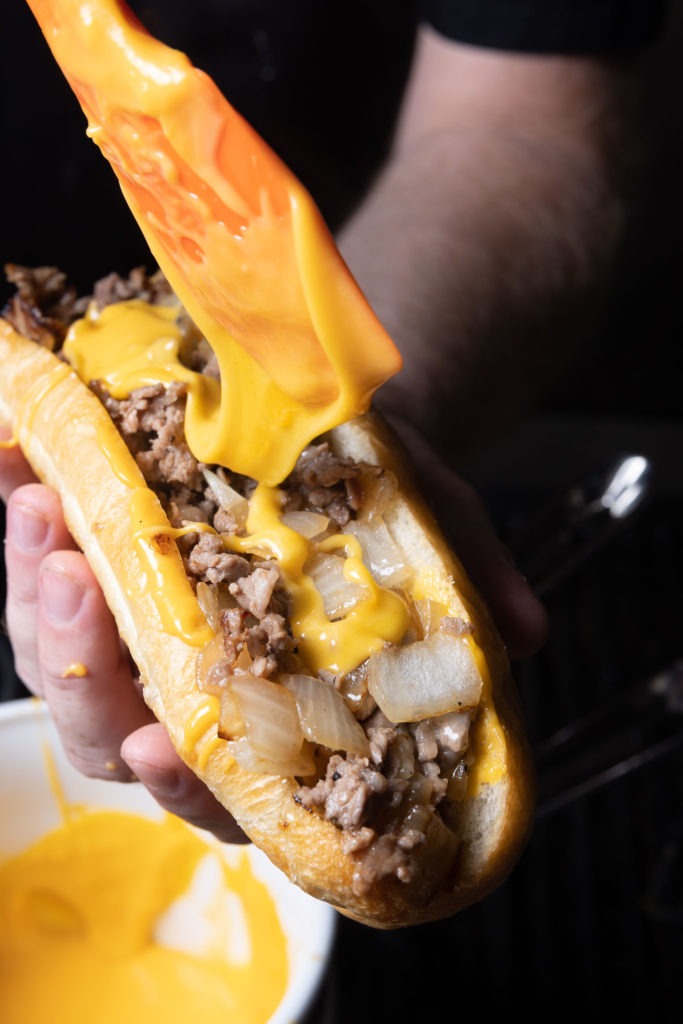
Onions, peppers, etc. should all be chopped (not sliced) into manageable pieces. Also, they should start cooking before you start the meat. Onions take a good few minutes to cook up the right way, as do peppers (and mushrooms and whatever else you want to throw on your sandwich).
To speed the cooking, you can harness the power of steam. Cook the veg for a minute or two, then hit the pan with a few tablespoons of water. The instant steam bath will soften the veg more quickly. Once the water is all cooked out, bring the pan/griddle back up to temp and then start cooking the meat.
